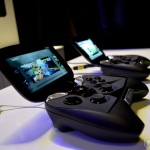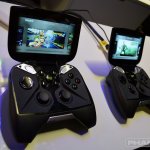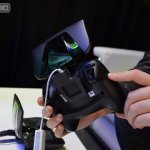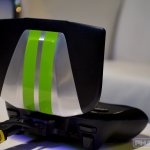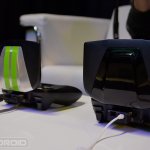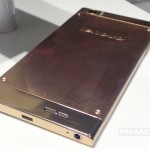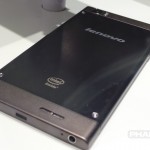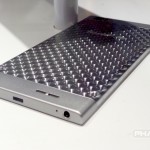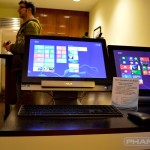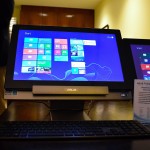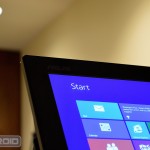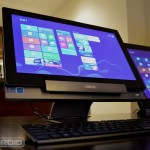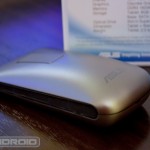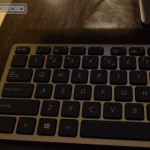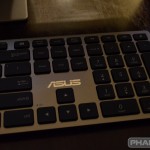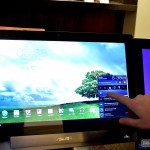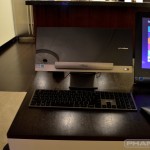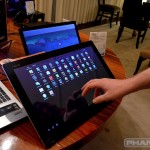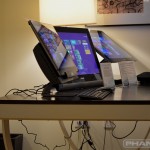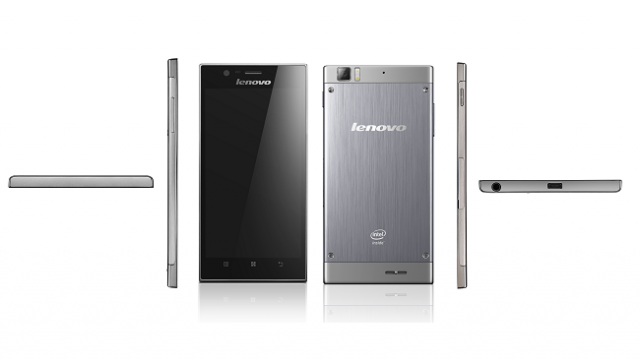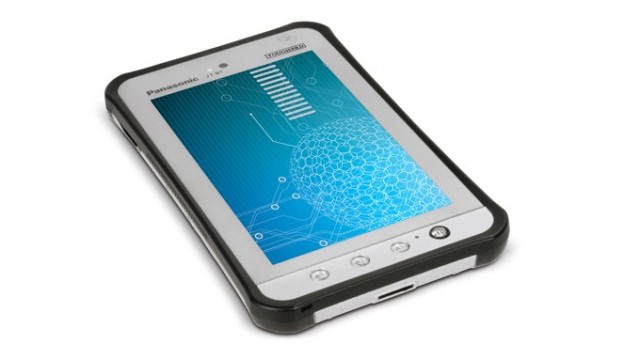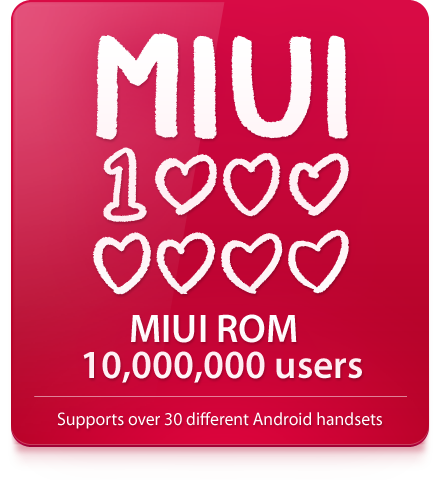Android Authority |
- Samsung’s 5-inch Galaxy Grand Duos firmware is out ahead of phone’s release
- Pebble smartwatch to start shipping to backers on January 23
- Top European telcos plan consolidation into EU-wide mobile network. How about competition?
- The AT&T Pantech Discover is coming to Verizon as the “Pantech Perception”
- Lenovo announces five more Android phones, none of them to hit the EU or USA
- LG shows off 5.5 inch 1080p, 7 inch 1920 x 1200, and 12.9 inch 2560 x 1700 displays
- Samsung wants to sell more chips to up and coming Chinese smartphone makers
- Samsung’s plastic is very cheap. The best smartphone is from Huawei, says Huawei CEO
- Technologies we’re looking forward to in 2013
- Sprint announces plan to add FM tuners to select Windows Phone and Android devices
| Samsung’s 5-inch Galaxy Grand Duos firmware is out ahead of phone’s release Posted: 10 Jan 2013 02:08 AM PST
Did you know that Samsung has a 5-inch smartphone of its own? The Samsung Galaxy Grand (GT-i9080) – as it's called — isn't garnering too many headlines probably because it's just teased last month. Though you can't find the phone in stores yet, the first firmware for the dual-SIM variant, which is known as the Galaxy Grand Duos, is already available to download. You can get the Android 4.1.2 Jelly Bean firmware for the Samsung Galaxy Grand Duos (GT-i9082) on Sam Mobile's website. From the description, it looks like the phone will be released in Russia and India first, possibly sometime in the first quarter of the year. Despite the gigantic size, the Grand doesn't sport a 1080p screen. Instead, you’ll find that it boasts a not so hot WVGA display (800 x 480 resolution). Other expected specs include a dual-core 1.2GHz processor, 1GB of RAM, 8MP main camera, and the aforementioned Android 4.1.2 Jelly Bean. The Galaxy Grand and Galaxy Grand Duos will come in Chic White and Dark Blue. Those who are looking for some pricing information will have to wait until Samsung spills the beans some more. Related Posts |
| Pebble smartwatch to start shipping to backers on January 23 Posted: 10 Jan 2013 12:37 AM PST
Following the December delivery setback, the good news keeps rolling in for backers of the e-paper Pebble smartwatch. After passing the FCC hurdle at the end of last month, we learned a couple of days back that the company was going to make a big announcement at CES, and it looks like the team didn't disappoint on that front. As announced during its Las Vegas press event, the Pebble watch will be heading to Kickstarter backers starting from January 23. Pebble is pushing to produce 15,000 units of the smartwatch per week, which means it will take about 6-8 weeks for all the orders to be shipped out. Non-backers who like to get the wristwatch can still do so by going to their website and cough up $150, but obviously you won't be receiving one before the 85,000+ supporters get theirs. We're glad that the Pebble story ends with a happy ending. Can't wait to see the smartwatch arrive on your doorstep? Share your excitement with us in the comments below. Related Posts |
| Top European telcos plan consolidation into EU-wide mobile network. How about competition? Posted: 10 Jan 2013 12:16 AM PST
Europe’s four biggest telecommunications companies are in talks to integrate their services in order to better serve European consumers. It has to be emphasized that at this point the preliminary talks are for integration within the EU market, because these companies have a much larger presence outside of the EU than within the continent. The integration of services for Deutsche Telekom, Telefonica, France Telecom, and Telecom Italia is a matter of economics and scale. It is easy to see the benefits for the consumers, like lower roaming charges, integrated infrastructure within the continent, possible lower costs, and better services for voice and data transmission. Here are a few key benefits. Single point of contact. For mobile phone manufacturers, there should be no difference whether the European landscape is fragmented or not, but for companies such as Apple, Microsoft and Google — which have to talk to different regulators on the continent — one point of contact is a big benefit. Currently, these companies have to negotiate with European regulators, as well as country regulators on an individual basis. With a single company that covers a big part of Europe, entry into the hardware, and software market would be much easier. Easier billing and monetization. The picture looks even better for developers who want to charge online games via phone bills. Instead of negotiating with at least four companies, they only need to sign up with one in order to be able to accept payment for game use. Increasingly, it is clear that one of the best and most convenient ways for game players to pay for their games is through the phone bill. Better technology adoption. In terms of technology, a single company operating with a wide coverage can push for better adoption of 4G technologies. Costs for network integration can also be much lower, as well as lower operating and inter-network costs. These four telcos may be based in Europe, but their biggest markets are outside of their own countries.
Besides their dominating presence in their home countries, they also have interests and cross-ownership and presence within the other countries in the European Union. It is not a far stretch that any movement towards an integration of this sort will result in cross ownership of the current companies. If government regulators do not allow a single company as a unifying presence, an alternative is to launch a holding company, which will then own the integrated company. In theory, at least, this is likely to be more acceptable to regulators, and should be within anti-trust rules. With this kind of coverage, regulators will have their work cut out for them. The main barrier to such an implementation is the fear of a monopoly, which would make it harder for the smaller players, like local companies and private startups. Additionally, anti-trust is about not letting any single entity control the market, which unfortunately, a conglomeration like this is bound to have, whether intentionally or not. Is Europe ready for a unified mobile network? Related Posts |
| The AT&T Pantech Discover is coming to Verizon as the “Pantech Perception” Posted: 09 Jan 2013 08:00 PM PST
Yesterday AT&T announced a 4.8 inch 720p handset called the Discover. It has a dual core Qualcomm Snapdragon S4 processor, 1 GB of RAM, 13 megapixel camera, and it even has 4G LTE support. It goes on sale this Friday for just $50 with a two year contract, which makes it an incredible bargain. But what if you’re a Verizon customer? According to @evleaks, the famous Twitter user who somehow manages to leak everything before everyone else, the Discover will be landing on Verizon as the Perception. When exactly and for how much? We can except to see the Perception on store shelves in Q1, but pricing information has yet to be divulged.  Should you buy this phone? Here’s the thing, Americans think that what they pay for a phone when they leave the store is an important number. It actually isn’t. Whether you get a $50 Discover or a $300 Note II, you’re still going to have the same phone bill for the next two years. Is it worth it to save $100 or $200 when you’re going to be locked to a device for the next 24 months of your life? We say no, but at the same time we understand that there are people out there who are not that financially well off. Just to put things into some perspective, the Galaxy S3, arguably the best phone of 2012, can be had on AT&T for just $150 more. That’s basically an extra $6.25 per month for the duration of a 2 year contract. On Verizon the S3 is the same price, but they’re also offering the 4G LTE enabled Nexus for just $50. Buying a smartphone is hard, we get that, but we suggest you think more about your bill than what you pay for your phone. Most of you would be fine using a prepaid plan from Straight Talk. There’s no 4G LTE, but can you really say no to $45 per month for unlimited everything? Related Posts |
| Lenovo announces five more Android phones, none of them to hit the EU or USA Posted: 09 Jan 2013 07:13 PM PST
Lenovo announced their flagship smartphone, the K900, earlier this week. For those of you who don’t remember why it’s special, it’s basically a 5.5 inch 1080p monster with a dual core Intel 2 GHz Atom processor. We thought that would be the only device from Lenovo at CES, but nope, we couldn’t have been more wrong. The company just announced five handsets. Let’s run through all of them briefly. First up is the S890. It’s highlight feature is the 5 inch screen, which sadly only does 960 x 540 pixels. That’s better than the 5 inch Galaxy Grand from Samsung, but worse compared to just about every other 5 inch smartphone on the market. It does have an 8 megapixel camera however, so maybe it’s not too bad? Next up is the S720. It has a smaller 4.5 inch screen, but it has the same resolution. It’s main features are dual SIM support and a massive 2,000 mAh battery. It too has an 8 megapixel camera. The P770 doesn’t come with any specifications, except for the battery, which is rated at 3,500 mAh. It’s a phone meant for business users. It even comes with anti-virus software preloaded. That’s not exactly a good sign that Chinese Android phones need such software, but hey, this is the world we live in. Moving on lower down the food chain, there’s the A800. It’s a dual core 1.2 GHz device, dual SIM, with a 4.5 inch FWVGA (854 x 480) display. There’s a 2,000 mAh battery on-board, and … that’s about it. Finally there’s the super cheap A690. It has a single core 1 GHz processor, 4 inch 800 x 480 screen, and it too has dual SIM support. Other than that, nothing was mentioned. If yo’re looking for some hard numbers regarding pricing and ship dates, we’re sad to say this, but they weren’t provided. More importantly, there’s a very high probability that you’ll never see these phones on the streets of your local country, unless China is the place you call home. Related Posts |
| LG shows off 5.5 inch 1080p, 7 inch 1920 x 1200, and 12.9 inch 2560 x 1700 displays Posted: 09 Jan 2013 06:49 PM PST
LG didn’t announce a 5.5 inch 1080p phone at CES, and for some strange reason people are upset. We’d rather the company announce that device and then ship it a month later instead of repeating the horrible mess that was the Optimus 4X HD. Remember that thing? It was announced in February 2012, but it didn’t start shipping until half a year later! Forgetting about phones for a second, LG is a company that should be recognized for their amazing screen technology. Regardless of what you think of Apple, there’s a reason that they depend on LG for the panels that go into most of their high end devices. With that in mind, we’re pleased to announce that LG has decided to demo three LCD panels at CES that we should see in devices later this year. Starting with the one we all pretty much knew about, LG demoed a 5.5 inch 1080p LCD. Is it any coincidence that Lenovo decided to cram a 5.5 inch 1080p LCD into their Intel powered K900? We think not. We don’t have any official confirmation that LG is supplying Lenovo with that particular panel, but it’s not too hard to connect the dots. The second display is more interesting. It measures 7 inches diagonal and has a resolution of 1920 x 1200 pixels. That means it isn’t 16:9, it’s more like 16:10. Could this panel end up in a refreshed Nexus 7? We certainly hope so, our eyes would definitely appreciate that. And last up is a curious beast that’s 12.9 inches diagonal and does 2560 x 1700 pixels. No, that isn’t a typo. Would such a panel be used inside a tablet or a laptop? What about one of those new fangled hybrid devices that serve both functions? Again, we’re baffled, but remain incredibly curious. Like we said earlier, these three displays will be in 2013 products, so now we just wait. Related Posts |
| Samsung wants to sell more chips to up and coming Chinese smartphone makers Posted: 09 Jan 2013 06:22 PM PST
There isn’t a single thing you can point to that can explain Samsung’s current market position. It’s the combination of component manufacturing, ridiculous amounts of advertising, and just plain good products that have given the South Korean handset maker the top spot in the mobile space. Focusing on the component manufacturing for a moment, without Samsung there would be no iPhone. In fact, every device that runs iOS has a chip inside that was produced at a Samsung factory. We know that Apple wants to distance themselves from Samsung, so that presents an important question: What’s Samsung going to do with all the chip building capacity they’ve been building up over the years? The obvious answer is to simply make more Samsung phones, but according to Stephen Woo, President of Samsung’s System LSI business, the company wants to do something a bit different. They want to help out the little guys, companies like Huawei and Lenovo, by building chips for them. Here’s what he told Reuters in an interview earlier today:
One thing Woo mentioned was the importance of the baseband, otherwise known as the part of the phone that allows it to connect to a cellular network. Woo bluntly said “we don’t have it.” He said Samsung is exploring their options, which is corporate slang for acquiring another company. Considering that ST-Ericsson will soon cease to exist, Samsung joining forces with Ericsson would give Qualcomm some proper competition. Related Posts |
| Samsung’s plastic is very cheap. The best smartphone is from Huawei, says Huawei CEO Posted: 09 Jan 2013 01:56 PM PST
We’re all for “dogfooding,” but if you’re going to make a bold claim like this one, then you had better have the specs, market results and user opinion backing you up. Still, it has not stopped Huawei consumer electronics CEO Richard Yu from making this statement at an interview CES in Las Vegas. The company has introduced its 6.1-inch Ascend Mate at the annual electronics trade show, where it has disclosed plans to convince U.S. carriers to offer high-end devices to consumers. Huawei has been known for its low-end devices, and may be known more to enterprise and industry customers as a provider of telecoms equipment. Yu wants to change this image, though, and Huawei’s latest top-of-line offerings are meant to convince buyers of the brand’s quality. The Ascend Mate, for instance, with its behemoth screen, is meant to challenge dominant phablets like the Samsung Galaxy Note 2 at their own game. Huawei has also introduced its Ascend D2, which is likewise a phablet, but with a smaller 5-inch form factor, quad-core processor and overall great hardware. Even as it can attract fans for sheer specs (and size), Huawei will need to attract American carriers if it wants to get on the right track to consumers’ hands and pockets. It seems there have been roadblocks along the way, though, such as a Congressional inquiry alleging that Huawei is installing backdoors into equipment meant for the Chinese government to spy on sensitive information, along with compatriot ZTE. Yu told The Verge that the carriers actually “like the product,” but the company will “need some time to get trust” from its target market. Huawei is even willing to sacrifice profit margins if only to encourage more sales through reduced prices. Comparing the company with its major competitors, the CEO slammed both Apple and Samsung for their seeming lack of innovation in their product lines today. “Steve Jobs is gone,” he said of Apple. “Now there is lack of innovation.” Yu has also criticized Samsung for cutting corners even on its supposedly high-end devices. In particular, they have scrimped on materials even in flagship devices like the Galaxy S3, points out Yu. “Their plastic is very cheap.” “The best smartphone is from Huawei. Not from our competitors,” says Yu. Would you agree? Related Posts |
| Technologies we’re looking forward to in 2013 Posted: 09 Jan 2013 12:56 PM PST
With CES 2013 happening right now, it's a great time to speculate on what's coming up in 2013. By the time this week is over, we'll have a great understanding of the direction technology is headed long term, as well as what we can expect to see immediately. Some of what you'll see and read this week is of companies showing off, as is de rigueur at trade shows like CES. Some of it you'll never see, and some you will see very soon. Our job here is to talk about the next curve in the road. Looking too far into the distance can be dangerous, so we won't ahead of ourselves. 2013 should bring us some great stuff, from TV to mobile devices and all things in between. Will we finally see widespread adoption of wireless charging for our phones? Will we finally not see our TV? Only time will tell, but we won't be waiting long to find out.
All charged upIt seems that one of the oddest thing about being mobile is the need to plug a device in. We're supposed to truck these things around with us everywhere we go, but then plug it in at some point. Batteries are continually being tasked with more and more device to power, so it's not surprising that our battery life suffers. Plugging in seems like such a holdout of years gone by, so why are we still doing it? We've seen wireless charging with the Palm Touchstone and Powermat charging mats, so it's not as if wireless charging is altogether new. The ability to charge without connecting a device is great, but just not necessary. If you'll still have to put your phone in one spot to charge, then the only luxury is not plugging it in. Your only real benefit is not dealing with wires, which is not really troublesome to begin with. With long range charging, all that could change. The ability to have your phone charging in a room rather than a pad on the desk is much more convenient and interesting. Is true long-range wireless charging possible?The basic principle of our current wireless charging is called magnetic induction. It's pretty straightforward, too: you put your device on a charging pad, and it charges due to the short range magnetic current your device picks up via the contact with that pad. With long range wireless charging, the technology is quite different. Long range charging uses what's called near field magnetic resonance. It operates much the same as the wireless charging we know now, just on a larger scale. That scale is currently being imagined at 1-2 meters, which is a significant start. Once an eligible device enters the charging "field", it will automatically do its thing. No pads to set it on, no cables or cords. Long-range wireless charging would be really convenient. You could have charging hotspots like the WiFi hotspots we have now. Your car could charge all your devices while you travel with no need for clumsy cables and cords. The same could be said for any mode of transportation, really. The bus or metrorail could attract many more commuters if that were a feature, and I’d be willing to bet Starbucks is on board. Is there a downside to this? Sure there is. For starters, that technology described above is patented by Apple. Apple and patents equals trouble, so it may not be readily available. The only workaround to that particular technology involves antennas, but that sounds very peculiar. It doesn't seem prudent to place yourself inside of a giant magnetic field full of antennas. With either of the long-range wireless charging technologies, we don't know what the effect on humans will be. Even on a small scale, it's a device or antenna emitting microwave frequencies. Is that really healthy for us?
Back to the futureThe television was the first domino in a long line of visual technology. The first TVs looked like a Nexus 7 glued to a refrigerator, but it was a breakthrough. We've come a long way since then, and what we're being teased with lately is no exception. If Samsung has their way, we'll have gone from those bulky living room centerpieces to little more than a frame on the wall. In the past few years, TV sales have been a declining market. A 6% dip last year was significant, and the market is only expected to even out in 2013, not grow. What happened? Why has the TV market taken such a downturn? The answer is complex, but fairly straightforward. Much of it has to do with our changing wants, while some of it has to do with perception. Traditional Cable TV has experiences a large loss of subscribers in the past few years. For a variety of reasons, people are either discontinuing or not signing up for service. As such, we simply don't watch as much TV, so buying the newest and slickest TV is just not important to consumers now. Even with things like Google TV or Roku, the desire for a thinner, lighter TV is waning. We associate a TV with the act of watching cable, and media has simply evolved beyond that. The concept of doing more with a TV is still a bit foreign to us. A recent study revealing that about half of all internet-ready TVs aren’t connected to the internet may prove that Now what?We have seen the rise of the thin, mountable TV in the past five years or so. We've gone from plasma to LCD, then to LED and OLED. The new frontier is 4K, which is an LCD variant. 4K is described best as super HD, which is a bit what OLED was supposed to be. Where OLED failed us was in it's high production cost, LCD is simply more cost effective to produce, and, if 4K can give us a great picture for the money, we'll buy. Manufacturers will also be making 4K OLED TVs, but those will be considered "high end" sets. Even with great screens at lower production cost, manufacturers aren't putting their eggs into that basket. We've been travelling that path for a few years, and it's clearly not working out like it used to. A great screen is wonderful, but it isn't everything. TVs are getting thinner, and we want them on the wall to save space in our homes. We have little room for a Roku or Google TV, so manufacturers are building that technology right in. For those that don't have the need or want for a new TV, those same devices are being built into small dongles that plug into the back and take up no room. The wild cardOne thing you probably used to do (and maybe still do) in your living room was play video games. The console gaming industry has been hit equally as hard by the current mobile shift, both in sales of games and consoles. An industry that used to be a sure thing has now been made to question itself. People clearly love gaming, as is evident by mobile games gaining in depth and audience. We've left the TV, but not the games. OUYA is trying to change all of that. While it's not necessarily earth shattering technology, it's a concept that could bring us all back to our TVs. OUYA is an Android based gaming device that uses your TV as a monitor. It straddles the line between console gaming and mobile gaming in a very interesting way. You play Android games, but you have a physical controller. It's open source, so anyone can create games for it. All games are free to try, but developers can make money by monetizing their creations. With some old favorites having been ported, as well as some newer games being developed for Android, OUYA could really drive us back to the living room in hordes.
Mobile flexibilityThere is little doubt you’ve heard the rumblings of flexible displays in our future. We’ve all seen the pictures (like the one above) of someone bending a clear display like a credit card, but it's not what you're going to see in the near future. Mobile devices are getting thinner and lighter every day, making them more fragile to impact. What we need to consider is whether or not a flexible display or device is really good for us. A flexible display is a very cool concept. Our immediate reaction is that it won't break, and for most of the breaks you see, that's true. Most devices with broken screens are due to dropping them or hitting them with something hard, like dropping keys or another device on the screen. A flexible display would take care of much of that concern, sure, but that may be the beginning of our issues. Our mobile devices are fragile, that much is often painfully certain. A flexible screen has the possibility to do more harm than good in that respect, though. Let's forget about the screen for a second and think about the rest of the device. In a situation where a person drops their phone, the screen absorbs the impact, which is why they shatter. If your device had a flexible screen, what would absorb the impact? A plastic device could simply break, and a metal device could bend. In terms of impact, a flexible screen is a possible lose-lose scenario, and a cracked screen may just be better than a broken phone casing or damaged hardware. The flexible display is a great theory, but needs work. It has the proposed benefit of being shatter resistant and using 25% less power than the screens we have now, as well as a fairly impressive 1280×720 resolution with 267ppi. Those are nice specs, but not as nice as some we have now. The technology is rumored to be on the Samsung Galaxy S4, so we may get a look at it in real-world use faster than we originally thought. We've seen flexibility before with Nokia, which had a flexible device that was controlled by bending and flexing it. It still sounds really great, but that was 2011 and we haven't seen the technology come to us. Any device which relies on torsion will wear sooner, and compromise the hardware. If we haven't seen a true flexible device yet, that's an indication that this particular technology is best served as a component rather than a standalone. ConclusionSome of the tech we discussed here will be readily available, and some will be a bit later on. A few of the things we touched on may end up being very high-end, or have utility in a different way. Trade shows like CES are good for manufacturers in that respect; they get some very good feedback amongst the slack jaws and giddiness. Is any of it going to be in stores two weeks from now? That's really doubtful. Much of what you'll see are working models of upcoming tech that still need a few bugs worked out. You may be wondering why Google Glass, everyone's favorite hold-your-breath-in-awe hardware, wasn't discussed. Quite simply, if Google doesn't know what the product is for, we wouldn't either. We've discussed Google Glass before, and are excited to see it someday. We're looking forward to Google I/O to see if Google has a better grasp on the hardware by then. So far, it's a very popular concept that needs work. If there is anything to take away, it's that your life will get more convenient. You may not have long range wireless charging in the next 6 months, but you'll see wireless charging become more prominent. Will you be able to get a TV that sits on our wall like an empty frame? Probably not, but you'll be able to get one with Google TV built in. A cell phone that looks like Saran Wrap? Not quite…but it will make its way into other tech. Manufacturers are striving to make your life more convenient, but is that what you're looking for? The only feedback that really matters is the feedback you give with your wallet. Related Posts |
| Sprint announces plan to add FM tuners to select Windows Phone and Android devices Posted: 09 Jan 2013 12:51 PM PST
Do you wish that your current smartphone had FM tuner support? If your carrier is Sprint, we have some good news. Sprint has announced it will be bringing NextRadio FM tuners to select Android and Windows Phone devices later this year. This probably won’t appeal to everyone, as many of us are perfectly content with using online radio or locally/cloud stored music instead. Still, for those with limited data or storage space, this could certainly be a welcome feature. In addition to working with all your favorite FM radio channels, the presence of the NextRadio tuner will also mean that any app that requires a physical tuner will play nicely with your FM-equipped Sprint device. Sprint also states that the their customers will have a "wide range of interactive listener features" at their disposal as well, though the specifics regarding this statement have yet to be revealed. There is no word on what devices specifically will be featuring tuners at this point. What do you think, are you excited about the idea of getting a Sprint phone equipped with a NextRadio FM tuner or could you care less? OVERLAND PARK, Kan.–(BUSINESS WIRE)–Sprint (NYSE:S) today announced a preliminary arrangement with representatives of the American radio industry that will enable Sprint customers to listen to local FM radio stations from a broad spectrum of radio companies and aggregators on select Android and Windows smartphones during the next three years. FM radio could be delivered through the NextRadio tuner application or other radio apps or services. This announcement marks the first time a U.S. wireless carrier would offer the ability to access local FM radio on a broad array of its devices. Consumers today can listen to radio on smartphones by streaming over the Internet. As part of this plan, Sprint customers could use their smartphones and the NextRadio tuner to listen to local FM radio stations. With the NextRadio tuner – expected to be available later in 2013 – Sprint customers would enjoy a wide range of interactive listener features not available today and would have the availability of local FM radio at their fingertips to access all forms of broadcast information. Demonstrations of NextRadio will be offered at booth 9033 in the Central hall during CES. Fared Adib, senior vice president, product development and operations at Sprint, stated, "We look forward to bringing Sprint customers another entertainment choice through NextRadio. This new, easy-to-use service adds another dimension to the versatility of our wide array of smartphones and will deliver a new avenue for thousands of local radio stations across the country to reach our customers." Gordon Smith, president of the National Association of Broadcasters, said, "This opportunity combines the strengths of the Sprint network with the impact of America's radio stations. It is the type of business-to-business partnership that recognizes the unique strengths of the wireless networks and the radio industry and provides services that are so important to the American people." Bob Pittman, CEO of Clear Channel, noted, "This is a great development for the radio industry, one which will help us bring the content and services that only radio can provide to the wireless system. It’s an important benefit for consumers across America, and we are pleased to participate in this effort.” Jeff Smulyan, CEO of Emmis Communications, who acted as principal negotiator for the radio industry, added, "Today is a remarkable day for our industry. I am gratified by the unity I have seen in our industry. It seems every broadcaster I know has supported this effort, and I am grateful to the tireless efforts of industry leaders, from the largest companies to the owners of the smallest stations … all of whom have helped us reach this agreement. While there is much work to be done, today is a critical first step." About Sprint Nextel Sprint Nextel offers a comprehensive range of wireless and wireline communications services bringing the freedom of mobility to consumers, businesses and government users. Sprint Nextel served nearly 56 million customers at the end of the third quarter of 2012 and is widely recognized for developing, engineering and deploying innovative technologies, including the first wireless 4G service from a national carrier in the United States; offering industry-leading mobile data services, leading prepaid brands including Virgin Mobile USA, Boost Mobile, and Assurance Wireless; instant national and international push-to-talk capabilities; and a global Tier 1 Internet backbone. The American Customer Satisfaction Index rated Sprint No. 1 among all national carriers in customer satisfaction and most improved, across all 47 industries, during the last four years. Newsweek ranked Sprint No. 3 in both its 2011 and 2012 Green Rankings, listing it as one of the nation's greenest companies, the highest of any telecommunications company. You can learn more and visit Sprint at www.sprint.com or www.facebook.com/sprint and www.twitter.com/sprint. Related Posts |
| You are subscribed to email updates from Android Authority To stop receiving these emails, you may unsubscribe now. | Email delivery powered by Google |
| Google Inc., 20 West Kinzie, Chicago IL USA 60610 | |














